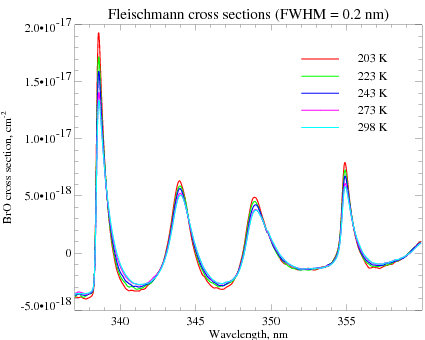
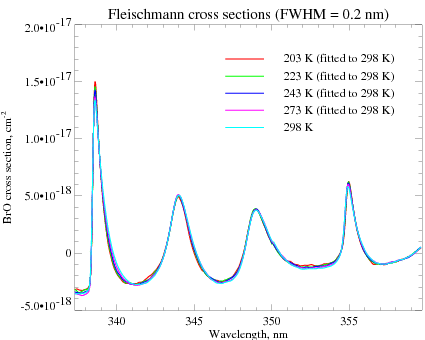
The instrument line shape in the SCIAMACHY channel 2 was recently investigated by Mark Weber and Lok Lamsal at the University of Bremen fitting the Kurucz solar spectrum and to ESM and ASM diffuser solar spectra from SCIAMACHY. The resuls if this study are summirized in
M. Weber and L.N. Lamsal, Recommendations of ozone-cross-sections for SCIAMACHY ozone retrieval in the 325-335 nm spectral window, Technical Note (PDF, 2.8Mb ), 2005.
The effective FWHM of the Gaussian line shape in the 340 – 360 nm spectral range was found to be about 0.2 nm.
Fleischmann et al.: 298 K, 273 K, 243 K, 223 K, 203 K
 |  |
| Left plot shows the temperature dependence of the Fleischmann cross section convolved to the SCIAMACHY resolution (FWHM = 0.2 nm). In the right plot all cross sections are fitted to 298 K cross section. The scaling factors are 0.784, 0.854, 0.905, and 0.982 for cross sections at 203 K, 223 K, 243 K, and 273 K, respectively. | |
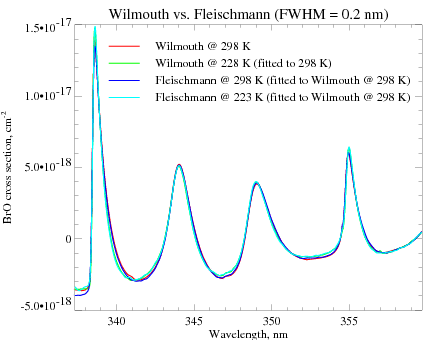 | 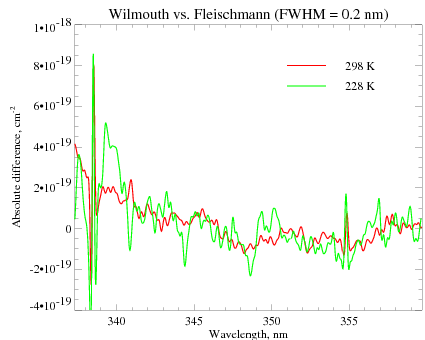 |
| The left plot shows Wilmouth cross sections at 298 K and 228 K as well as Fleischmann cross sections at 298 K and 223 K. All cross sections are convolved to the SCIAMACHY spectral resolution and fitted to Wilmouth cross sections at 298 K. The scaling factors are 0.78, 1.03, and 0.87 for Wilmouth@228K, Fleischmann@298K, and Fleischmann@223K, respectively. The right plot shows the absolute difference between Wilmouth and Fleischman cross sections at the same temperature. Fleischmann cross sections are fitted to Wilmouth in order to remove scaling factor, shift, and squeeze. | |
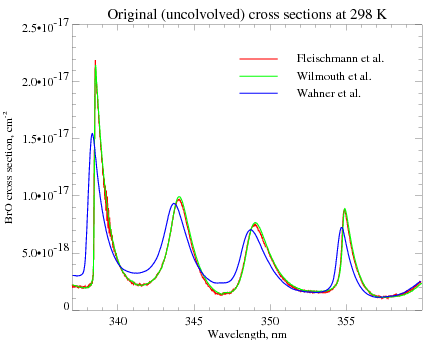 | 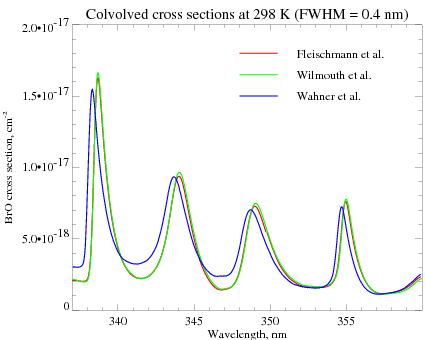 |
| The cross sections presented in the right plot were convolved to the resolution of Wahner et al. cross section (0.4 nm) assuming the Gaussian shape of the instrument slit function. To account for the finite resolution of the original cross-sections the full width at the half maximum of the Gaussian slit function was corrected as proposed by Chris Sioris: (FWHM_convolution)^2 = (FWHM_Wahner)^2 - (FWHM_Fleischmann)^2 and (FWHM_convolution)^2 = (FWHM_Wahner)^2 - (FWHM_Wilmouth)^2, respectively. | |
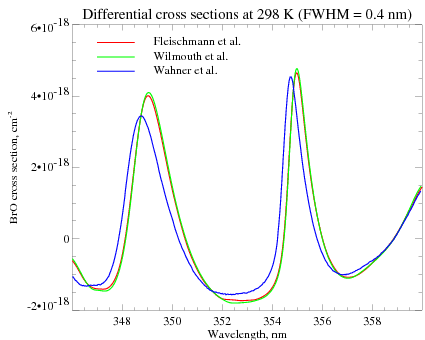 | 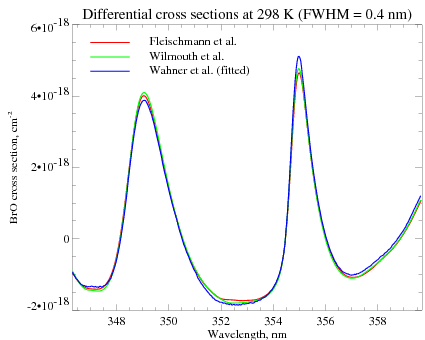 |
| Differential cross section of BrO in 346 - 360 nm spectral range as was used by Heidelberg balloon group to retrieve BrO profiles from balloon-born DOAS measurements [Dorf et al.] at 298 K. The second order polynomial was subtracted. Left plot: original cross sections, right plot, Wahner et al. cross section was fitted (shift, squeeze, scaling) to achieve the best match to the Wilmouth et al. cross section. The scaling factor was found to be 1.13. Thus the BrO slant slant columns retrieved employing the Wahner et al. cross section at 298 K are expected to be about 13% larger compared to the results obtained using Wilmouth et al. cross section at the same temperature. A similar fit to Fleischmann et al. cross section results in a scaling factor of 1.10 | |
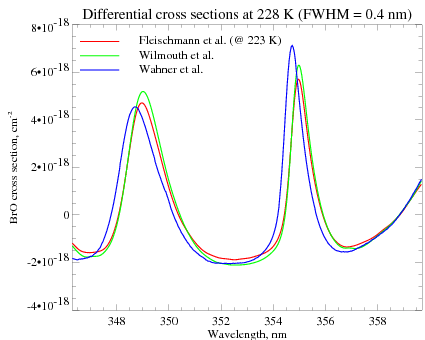 | 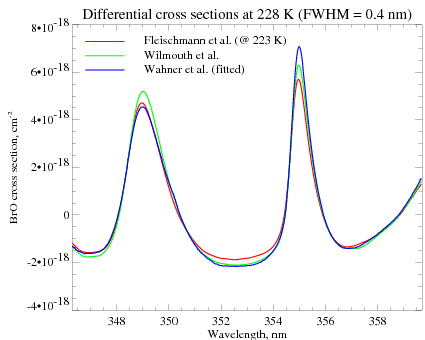 |
| Differential cross section of BrO in 346 - 360 nm spectral range as was used by Heidelberg balloon group to retrieve BrO profiles from balloon-born DOAS measurements [Dorf et al.] at 228 K. The second order polynomial was subtracted. Left plot: original cross sections, right plot, Wahner et al. cross section was fitted (shift, squeeze, scaling) to achieve the best match to the Wilmouth et al. cross section. The scaling factor was found to be nearly 1. | |